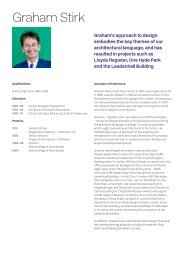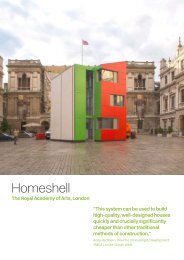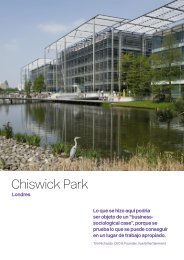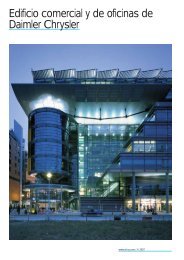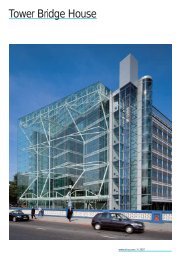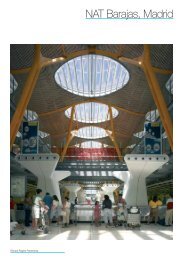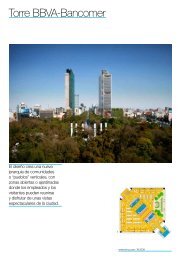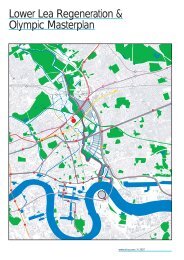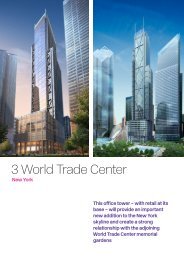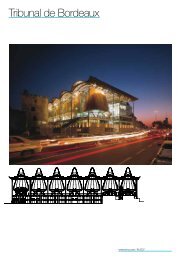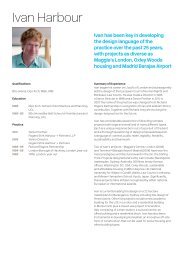Grand Paris Executive Summary (PDF 31MB) - Rogers Stirk Harbour ...
Grand Paris Executive Summary (PDF 31MB) - Rogers Stirk Harbour ...
Grand Paris Executive Summary (PDF 31MB) - Rogers Stirk Harbour ...
Create successful ePaper yourself
Turn your PDF publications into a flip-book with our unique Google optimized e-Paper software.
8 - INTEGRATING NATURE INTO THE MeTROPOLIS<br />
THROUGH An integrated open-space network<br />
We propose:<br />
<strong>Summary</strong><br />
••<br />
A green belt to limit the uncontrolled expansion<br />
of the physical footprint of the metropolis.<br />
••<br />
A green belt as a means to preserve<br />
the natural heritage of the region and<br />
provide a sustainable natural reserve<br />
for the metropolis in the long term.<br />
••<br />
A network of ecological corridors, linking the<br />
region’s important natural spaces and ensuring<br />
the continuity of biospheres and the migration<br />
of species. The barriers that limit these<br />
movements will be overcome.<br />
••<br />
A new forest holding a million trees will<br />
transform the areas that were in the past<br />
disadvantaged by the acoustic shadow of the<br />
airport Roissy CDG. This will become a new<br />
leisure destination for the population of the<br />
north of the city and a natural park. There is the<br />
possibility of harnessing this new carbon sink<br />
and supplying biomass to the new cogeneration<br />
centres of the metropolis.<br />
••<br />
New green arteries linking the rural and<br />
natural “Region” with the urban city centre by<br />
passing above the railway lines following new<br />
linear parks (see “Metropolitan Armatures”).<br />
••<br />
New unbroken pathways for pedestrians<br />
and cycling lanes to enable citizens of the<br />
city to move around safely, serrounded<br />
by vegetation and shaded by trees.<br />
••<br />
New public networks in the city centre,<br />
linking the existing open spaces of<br />
the metropolis with the new.<br />
••<br />
Re-connection of the banks of the Seine and of<br />
the metropolis’s canals, providing new corridors<br />
designed to enable continuous pedestrian<br />
movement along these “blue networks”.<br />
••<br />
Transformation of the big boulevards in the<br />
centre of <strong>Paris</strong> into green axes, giving the<br />
priority to walking, cycling and public transport.<br />
• • The idea of transforming the under-optimised<br />
surface area of the rooftops of <strong>Paris</strong> into a<br />
large green carpet, creating approximately<br />
391km2 of green rooftop space and provide<br />
significant benefits in terms of well-being,<br />
temperature, ecology and rain-water collection.<br />
xviii <strong>Rogers</strong> <strong>Stirk</strong> <strong>Harbour</strong> + Partners / London School of Economics / Arup<br />
February 2009



